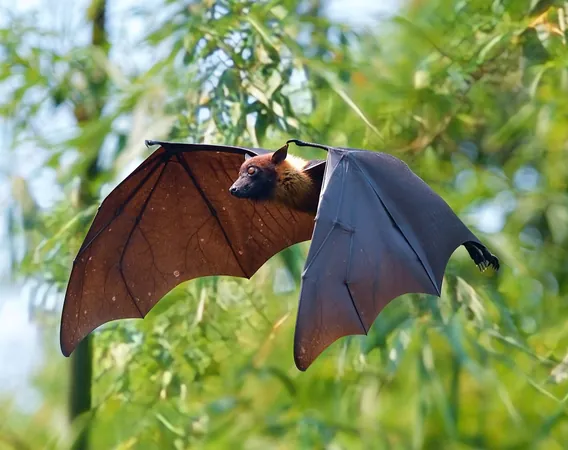
Bats Unveil the Secrets of Acoustic Navigation in Darkness
2024-11-01
Author: Wei Ling
The Power of Echolocation
Bats emit sound waves that bounce off objects in their surroundings, allowing them to hear the echoes and effectively 'see' their environment without light. This echolocation ability is not just for avoiding obstacles; it also serves as a sophisticated natural GPS system that enables them to track and navigate their location over impressive distances.
The Breakthrough Study
Conducted by a research team led by Iain Couzin at the Max Planck Institute for Animal Behavior, the study focused on Kuhl’s pipistrelle bats (Pipistrellus kuhlii) in Israel’s Hula Valley. Weighing only about six grams, these bats were part of a fascinating experiment that involved relocating 76 individuals within a three-kilometer radius from their roost and monitoring their journeys home using a lightweight reverse GPS tracking system called ATLAS.
What researchers found was astonishing: a remarkable 95% of these bats successfully navigated their way back to their homes in a matter of minutes solely through their acoustic abilities!
Navigation Beyond Echolocation
The study integrated a detailed mapping analysis of the valley, guiding researchers to understand how bats utilize their auditory experiences for navigation. Equipped with a cognitive understanding of their surroundings, bats demonstrate a unique ability to recognize distinctive landmarks like trees or buildings through sound alone. This capability indicates a sophisticated form of mental mapping, allowing bats to strategize their flight paths with remarkable efficiency.
The Role of Memory in Navigation
Memory plays a significant part in enhancing a bat's navigational prowess. Kuhl’s pipistrelle bats possess dynamic cognitive maps that evolve from their experiences, combining real-time data from echolocation with their memory of past flight routes. This adaptability helps them thrive in ever-changing environments.
Implications of the Findings
The implications of this research extend beyond the natural world. Understanding how bats integrate sound and memory for navigation can provide critical insights for the development of advanced technologies, such as autonomous vehicles and drone navigation systems. The efficiency with which bats interpret environmental acoustics may lead to innovations in sonar-based technologies and improved navigation strategies for humans, especially in situations where traditional GPS fails.
Future Research Opportunities
Future studies could explore how bats adjust their echolocation techniques based on diverse terrains or atmospheric conditions. Such research would deepen our understanding of sensory integration and offer valuable knowledge for technological advancements across various fields, such as robotics, communication, and environmental conservation.
Conclusion
As we delve deeper into the remarkable world of bat navigation, we uncover not just the secrets of their extraordinary skills but also pathways to enhance our technology and navigation methods. With research shedding new light on these creatures’ acoustic mental maps, we may very well be on the verge of improving how we navigate our own environments!
This fascinating study is shedding light on an unbelievable aspect of the animal kingdom and has the potential to reshape our understanding of sensory navigation. Stay tuned for more incredible discoveries in the world of science!



 Brasil (PT)
Brasil (PT)
 Canada (EN)
Canada (EN)
 Chile (ES)
Chile (ES)
 Česko (CS)
Česko (CS)
 대한민국 (KO)
대한민국 (KO)
 España (ES)
España (ES)
 France (FR)
France (FR)
 Hong Kong (EN)
Hong Kong (EN)
 Italia (IT)
Italia (IT)
 日本 (JA)
日本 (JA)
 Magyarország (HU)
Magyarország (HU)
 Norge (NO)
Norge (NO)
 Polska (PL)
Polska (PL)
 Schweiz (DE)
Schweiz (DE)
 Singapore (EN)
Singapore (EN)
 Sverige (SV)
Sverige (SV)
 Suomi (FI)
Suomi (FI)
 Türkiye (TR)
Türkiye (TR)
 الإمارات العربية المتحدة (AR)
الإمارات العربية المتحدة (AR)